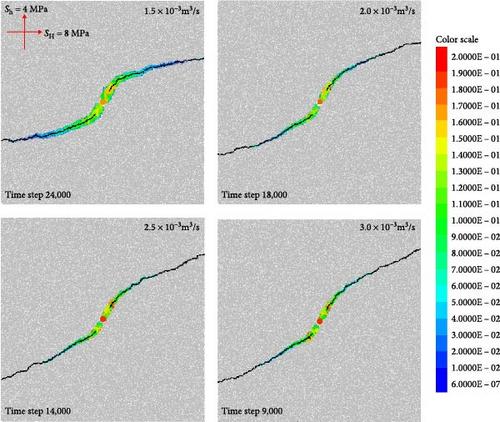Study on Hydraulic Fracture Propagation Behavior from Oriented Perforation Based on Particle Flow Method
Abstract
Studying the hydraulic fracture(HF) propagation behavior of oriented perforation is crucial for optimizing perforation schemes and achieving effective hydraulic fracturing stimulation. In this study, a fully dynamic fluid-mechanical coupling HF propagation model based on the particle flow method was established to investigate oriented perforation hydraulic fracturing. The fracture propagation results obtained by numerical simulations were in good agreement with published experimental results, indicating the reliability of the numerical results. Then, the model was used to study the effects of different perforation and fracturing parameters on the geometrical morphology of the HF under different in situ stresses. The simulation results show that the perforation angle and length have a significant impact on the fracture morphology and redirection of the directional hydraulic fracturing (DHF). As the perforation angle and length increase, the HF will require a longer distance to redirect. The induced compressive stress zones on both sides of the fracture and the tensile stress zone at the tip directly control the reorientation of HFs. The fracturing fluid viscosity and displacement have an important influence on the pore pressure field and induced stress field around the DHF fractures. Under the high perforation angle, the speed of HF redirection slows down with the increase of the fracturing fluid viscosity and displacement. Reducing the seepage effect of fracturing fluid and increasing the displacement is beneficial for controlling the directional propagation of fractures. Choosing reasonable perforation and fracturing parameters can minimize the redirection of fractures.


 求助内容:
求助内容: 应助结果提醒方式:
应助结果提醒方式:


